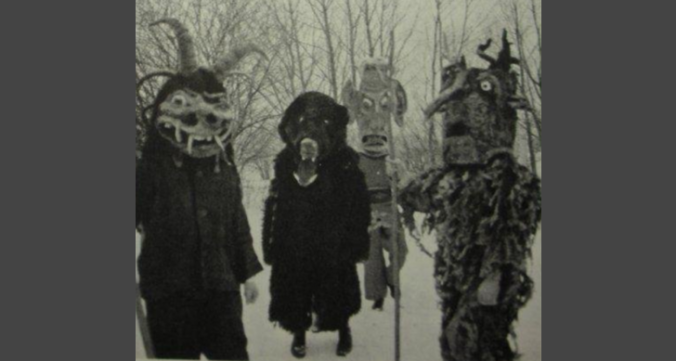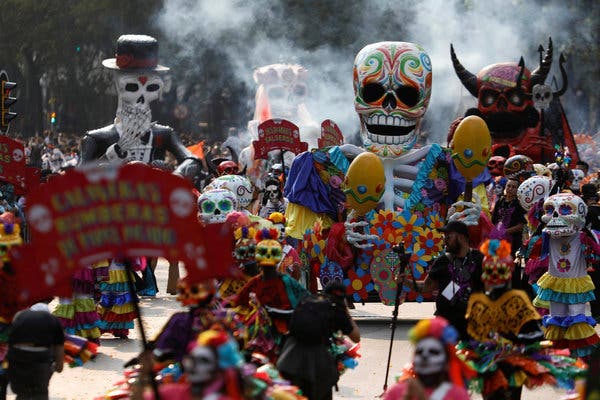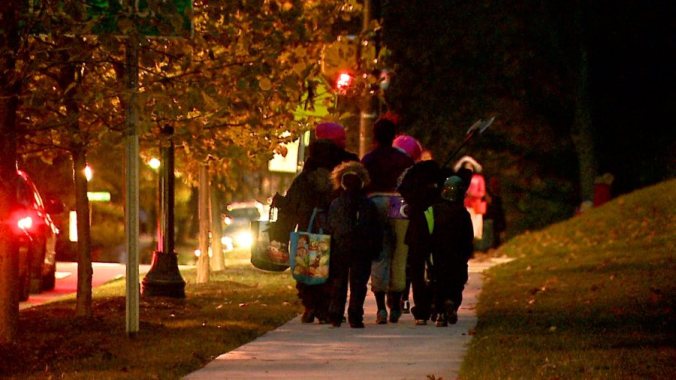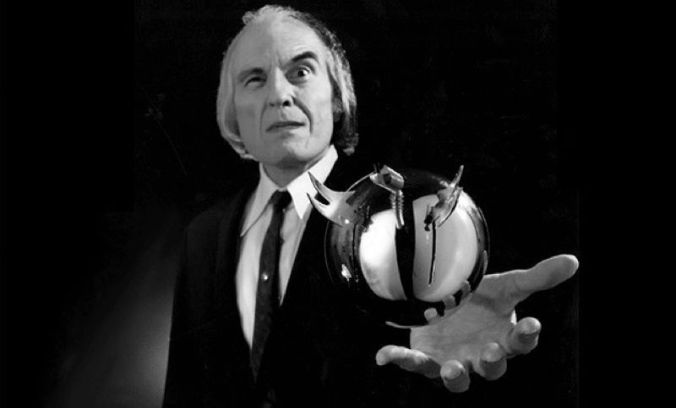
What an odd holiday, Halloween is. Like most holidays, there is a mix of things going on here that mash together to become what we know today. And as usual, what it became in the 20th century is not at all what it started out as. At some point I’ll write about the 20th century and it’s impact on so much we know today, and how wrong what we know, is.
Like several of our holidays, the Celts had some to say in what we have today. Samhain, was a day the Celts chose to ward off evil spirits by wearing costumes and lighting fires. The day they chose was October 31st. So right off we see the date and costumes coming from the Celts. BTW, the term Celtics is a reference to a language, not a place. So the basketball team is named for people who speak a language, not a specific place.

In the 700s, Pope Gregory III declared November 1st as a day to honor all our saints; creatively called, All Saints Day. Soon, some of the traditions already in place for Samhain drifted into All Saints Day.
In order to better illustrate my bit about the basketball team, Celts were a much broader culture than just Ireland we know today. Then, being 2,000 years ago, Celts lived in modern day Ireland, United kingdom and Northern France. Also, November 1st then, marked the new year for them. So the October 31st date then, is more like our New Years Eve now.
This was a much more meaningful day then than it is to us now. Today, we change calendars we got for Christmas and mark the new year by getting blitzed, apply for bail and wonder where we parked our car, buy a morning after pill and figure out how to apologize to our significant other. Then, they felt that years were worlds in and to themselves and that new years eve and day, marked a transition between worlds. As such, the boundaries between worlds were weakened and spirits, if they felt so inclined, may sneak out to go walkabout. OK, I’m mixing cultures pretty badly but I paint a festive scene …
This was an important time for making predictions, good or bad, accurate or likely not. Great fires were built to draw power from the coming year and men dressed in animal costumes would make predictions for the coming year. None to my knowledge were called ‘Madam Rosa and her Red Palm’. The more interesting thing I learned is that we built great fires to draw power from the year to come, but home fires were extinguished to not draw that power into their homes. There is good and bad power, and good and bad places for it.
As in many of our traditions, enter the Romans. Ironically, the Romans also had a holiday in October to honor the dead. (funny how these things happen) They combined this with the pre-existing already up and running Samhain. There was also a goddess in Roman culture who ruled over fruits and trees. Her name was Pomona. (The city is named for her but at the time the city had no fruit trees) Her special day was also in October so they rolled all of these into one day of death and fruit, or dead fruit maybe.
So it went until the 7th century. Then, The papacy returns. Pope Boniface IV dedicated a day to Christian martyrs. When pope Gregory III dedicated that all saints day, he also invited the martyrs to the party.
There is also the separate holiday of ‘Day of the Dead, or Dia de Muertos in Spanish, which is a traditional Mexican holiday where the dead are remembered in celebration. This is a reflection of a much more tangible acceptance of death in this culture instead of a solemn affair. This was largely a southern and middle Mexican celebration significantly adopted from Aztec traditions.

The Aztecs had a month long celebration but they also had a fascination with death. They used a different calendar of 9 months (making a month long event even longer) and their day of celebration somewhere in August. this tradition went back as far as 2500 years ago. Over time, November 1 was in recognition of children who died and the 2nd, for adults.
In the 20th Century the holiday migrated into northern Mexico as well but only passively. Eventually the day became a national holiday, and a somewhat unifying event for the nation.
Then comes the final and predictable transformation that is common to so many of our Holidays. The Christians co-opted the day by naming November 2nd, all souls day. Much like Christmas, Christians took a pagan holiday and made it their own by changing names and meaning. They chose to mark this day with fires and costumes of saints, martyrs and devil(s). Funny how similar they marked such a similar day that is a new day …
All saints day, became known as All Hallows Day. Hallowes coming from Middle English for saint. The eve of, became All Hallowe’s Eve. Eventually, Halloween. In time, the holiday came to America after the Puritans got the sticks out of their butts and some real fun got goin. The real push came when the Irish started emigrating to America and rekindled the old Samhain traditions but adopting the by then American traditions of story telling about the dead around a grand fire.
No this is a twice come around Celtic born holiday, with a dash of more.

In the late 19th century, there was a push to make the day about community and family, so scary and religious icons were removed from the day. This is also when what became trick or treating came about as a way of getting to know your neighbors by passing food to one another. This became especially popular in the depression when sharing of food and especially sweets became a need and children, who for a day could look past limited access to food, and celebrate the day. The holiday then faded in the 40s.
The 50s baby boom brought a greater desire for child based activities so it was reborn. The part we overlook today, was that then the phrase, ‘trick or treat’ was actually a threat. The treat prevented a trick in the form of vandalism.

Much like Christmas, Halloween also has a symbol; the pumpkin. This is an old tradition in various forms. Gourds were among the first foods domesticated so they and humans go way back, about 10k years. How we get to the most modern variation is again back to the Irish and a legend of a vague light in bogs they called Jack-0-lantern. This was simply a term they used to personify what was likely methane burning in bogs, but by naming it, it became less scary.
Gourds were carved into lanterns as a simple function of practicality since they often developed hard skins and became very functional. The Irish again, likely bought the pattern to the Americas when they themselves came. The tradition though, was not always connected to Halloween, or day of the dead or all saints day or whatever it was called then and there … This came in in the 1800s but only slowly.

We again bring in a name that has much impact on American culture, Washington Irving. We all know the Legend of Sleepy Hollow and the carved pumpkin carried by the Equestrian with no gourd of his own. In that time, pumpkins being far more prominent in North America than other gourds there had already been a tradition of them being carved around Thanksgiving time, but really tied to harvest time.
With the core of Washington Irving’s story involving ghosts and hauntings, it was easily tied to Halloween. This likely transported the pumpkin lantern to Halloween and over time, became the symbol.
So on this day of changing worlds, when the boundaries between the living and the dead are blurred, we honor our saints and martyrs, and buy candy by the billions. We use that candy to bribe our communities babies to not vandalize our homes. So merry Samhain and Happy All saints and Martyrs Day and Day of the dead and I highly suggest a treat, over a trick … Get your mind outa the gutter, or bring it here!
I was not able to find any statistics on the increase in egg or toilet paper sales for this day.
I’ll see what I can find as I watch Phantasm, the only movie that ever creeped me out. Nice car too.

Pingback: Washington Irving – First American Influencer | 5280nup